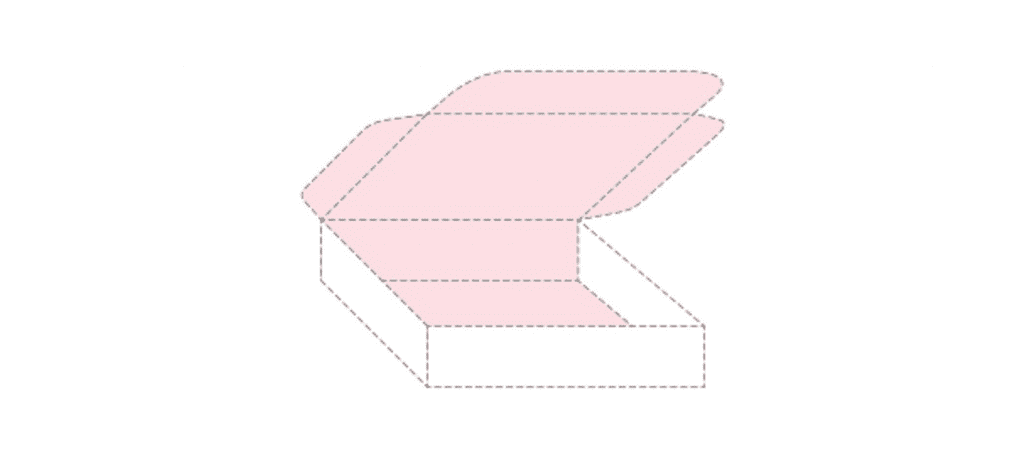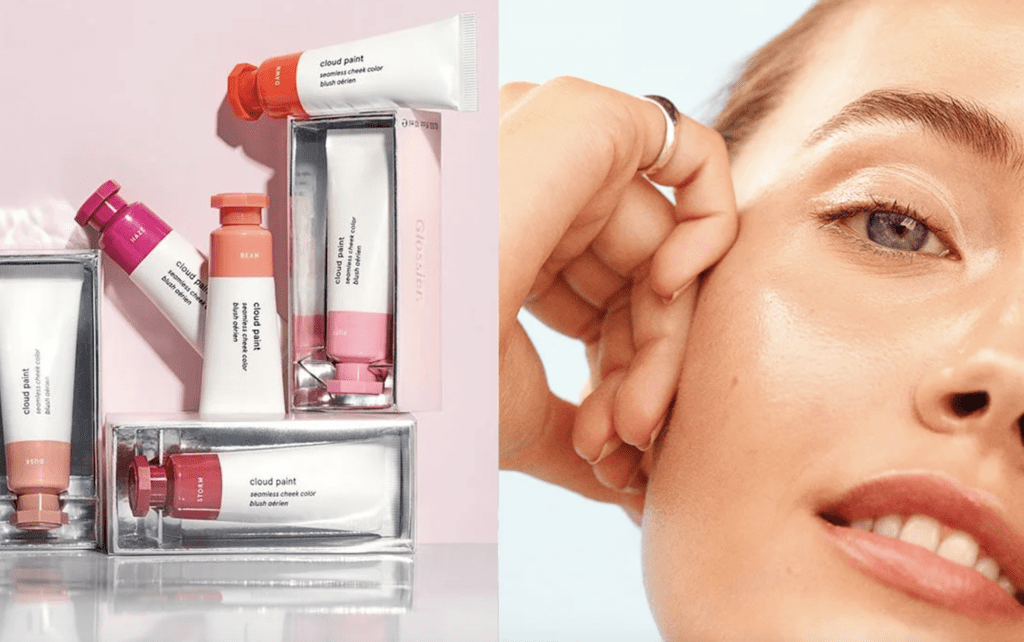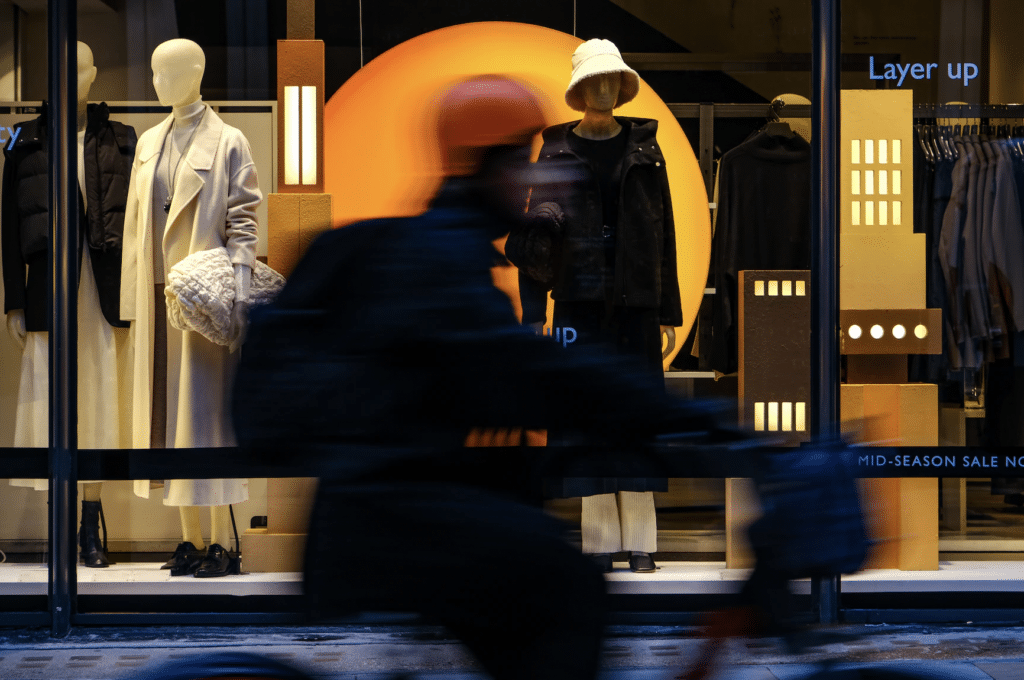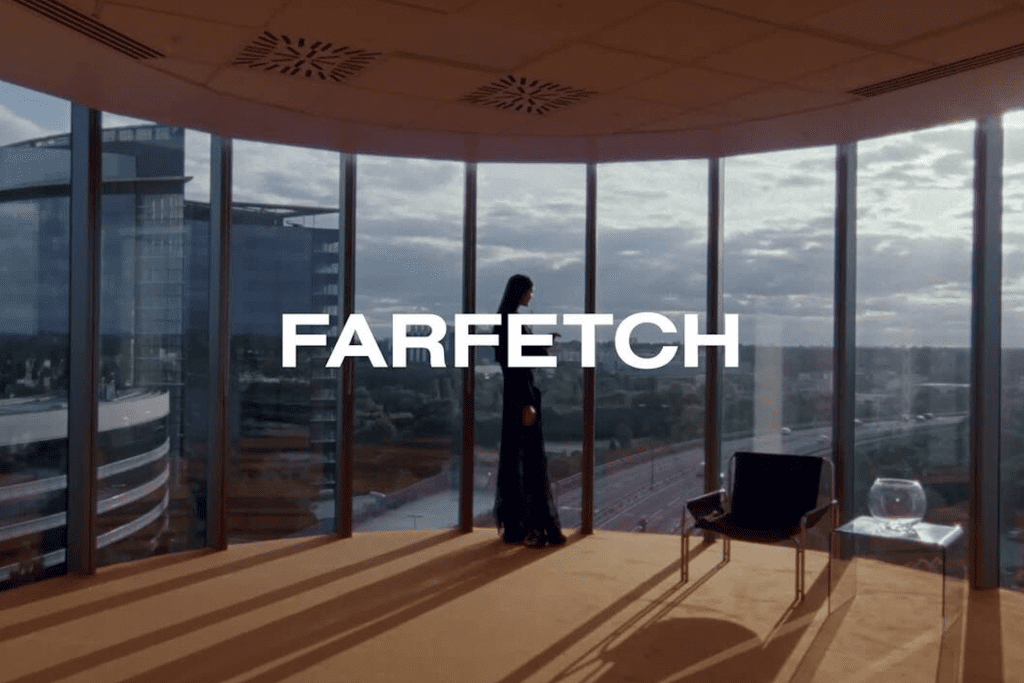The color pink applied to the inside of boxes that are not otherwise pink. That is what is at the center of the new trademark registration that the U.S. Patent and Trademark Office (“USPTO”) has issued to Glossier. A year and a half after it filed an application for registration for its millennial pink hued product packaging, the USPTO has handed the direct-to-consumer beauty brand a win and agreed to register “the color pink as applied to the inner surface of portions of boxes that contrast with the color of the rest of the boxes, which form packaging for the goods” as a trademark for use in connection with an array of cosmetics products.
The registration – which was issued on December 15 (the same day that USPTO doled out three registrations for Valentino’s Rockstud footwear) – comes up a bit short of what Glossier initially set out in its application, with the buzzy New York-based brand originally seeking protection for “the color pink … as a feature of the mark which is displayed on boxes” in its May 2019 application. Glossier walked back a bit early this year following pushback from the USPTO, and amended the description of the mark to a slightly-less-sweeping: “the color pink as applied to the inner surface of portions of boxes that contrast with the color of the rest of the boxes, which form packaging for the goods.”
In making such a “contrasting color” modification to the language identifying its mark, the description of Glossier’s mark mirrors the language that Christian Louboutin was forced to adopt in connection with its trademark registration in light of the outcome of the trademark infringement case that it filed against Yves Saint Laurent in April 2011. Louboutin’s trademark registration now extends to a lacquered red sole on contrasting-colored footwear; as opposed to broadly covering a “lacquered red sole on footwear.”
(And in fact, Glossier’s counsel pointed to Louboutin’s trademark rights – “by way of analogy” – in its February 2020 response to the USPTO’s Office Action to support its quest for “protection for a narrowly defined display of the color pink that is capable of acquiring distinctiveness just as Louboutin’s red sole was.” It is worth noting that Glossier’s registration does not cite a specific Pantone hue like Louboutin’s does.)
The description of Glossier’s mark also notes that “the shape and configuration of the box is not a part of the mark,” and instead, “merely represents boxes of various sizes and serves to show positioning of the mark,” thereby, enabling Glossier to claim rights in any of the shapes/sizes of boxes that it uses to package and ship its hot-selling cosmetics products – from its Cloud Paint cream blush to its Generation G sheer matte lipstick. This is no small matter given the fact that Glossier almost certainly does the vast majority of its sales via e-commerce both in a pre- and post-pandemic given its relatively limited brick-and-mortar footprint.
While the concept of a color – or better yet, the specific use of a specific color on a specific category or categories of goods/services – as a trademark is well established (Owens-Corning, Qualitex, Tiffany & Co., Louboutin, UPS, Home Depot, etc.), the USPTO was still slightly hesitant when it came to Glossier’s mark, and issued an Office Action in August 2019 on the basis that its use of the color pink on the inside of a box is functional and decorative and thus, not an indicator of source..
According to the USPTO, consumers are unlikely “to perceive the color pink as identifying the origin of [Glossier’s] goods; but rather, as [a] decorative feature … because they are accustomed to encountering various colors, including pink, on various packaging for cosmetics and beauty care goods.” (The examining attorney pointed to pink boxes utilized by Kylie Jenner’s eponymous cosmetics brand, subscription box company Fab Fit Fun, and Sephora as examples).
Counsel for Glossier responded to the USPTO’s Office Action by way of a 160-page filing in February 2020, in which it argued that the company’s use of the color is not functional. Not only are there “numerous other color options available for other parties to use on the interior of boxes for cosmetic products,” Glossier cited the Federal Circuit’s 1985 decision in In re Owens-Corning Fiberglas Corp. (which found that “depriving the public of the right to color insulation pink does not hinder competition or take from the goods something of substantial value”) in asserting that“there is no particular value or advantage to making a pink interior that contrasts with the rest of the box.”

In addition to not being functional, Glossier asserted that its mark has acquired distinctiveness “based on five years’ use of the mark, as well as extensive evidence that when the relevant consumers see the color pink on the interior of a box for cosmetics, and the rest of the box is a contrasting color, they immediately recognize it as emanating from Glossier.”
According to the nearly 7-year old brand, “The ultimate test in determining whether a designation has acquired distinctiveness is an applicant’s success in educating the public to associate the proposed mark with a single source.” Here, Glossier claimed that it has done so by “consistently promot[ing] the Pink Box by featuring it in social media posts and other advertising,” and being the subject of unsolicited social media attention from purchasers, who “make a point to share photos of not just [its] cosmetic products, but also the box they come in,” which Glossier says “speaks to the distinctiveness of the packaging.”
These social media posts – in which “consumers frequently post their own images of the Pink Box and identify Glossier in tags and hashtags” – not only “demonstrate that many consumers already associate the Pink Box with [Glossier], but they also serve to educate even more consumers and reinforce the association between the Pink Box and Glossier,” the brand asserted. It also submitted 98 customer declarations, examples of third-party social media posts and unsolicited media coverage, and copies of the pouch by other brands as evidence of acquired distinctiveness.
Fast forward to December 15, and Glossier can add a registration for the pink interior of its product packaging to the registration it was issued in August for its pink bubble wrap pouch, or “the claimed color pink as applied to bags featuring lining of translucent circular air bubbles and a zipper closure” to be exact.
The registration is certainly striking given the ripe not-old age of the Glossier brand, and it may suggest that the digitalization of consumption and the rise of social media is making it easier for brands to establish the requisite level of acquired distinctiveness for their source-identifying use of the color. However, it should not necessarily be viewed as an indication that such plays for color are likely to be a sure-fire for other young brands given that Glossier is, in many ways, an outlier.
In addition to courting a cult fan base, which arguably dates back before the launch of the brand in 2014 to 2010 when Glossier founder Emily Weiss first launched her heavily-followed Into the Gloss beauty blog, the company’s “no-makeup” beauty products and Instagram-centric aesthetic benefit from the backing of nearly $200 million in funding from sophisticated VCs, including Forerunner Ventures, Thrive Capital, Index Ventures, and Sequoia Capital, among others. In other words, Glossier – which nabbed a valuation of a whopping $1.2 billion in March 2019 at the close of its $100 million Series D funding round – is hardly the average beauty startup. It is a resource-flush machine that is well-equipped (both in terms of its consistent and sweeping marketing strategy, and its established legal prowess, of course, courtesy of Barnes & Thornburg) to demonstrate the its specific use of a color – millennial pink – is a distinctive identifier of a single source among its target consumers.
As Osler Hoskin & Harcourt LLP’s May Cheng and Maryna Polataiko asserted in connection with the protection of color marks, the “hurdle” that is acquired distinctiveness “may be difficult to overcome for less-established brands or those with lower brand consistency” and presumably, those with lower brand reach. And that likely remains true even as Glossier continues to build up its trademark portfolio.
Nonetheless, Glossier is certainly shedding light on how forward-thinking companies are approaching branding, which includes going beyond merely word marks and logos to product packaging and color to build – and consistently reinforce – brand awareness in a heavily (and increasingly) digital market.














